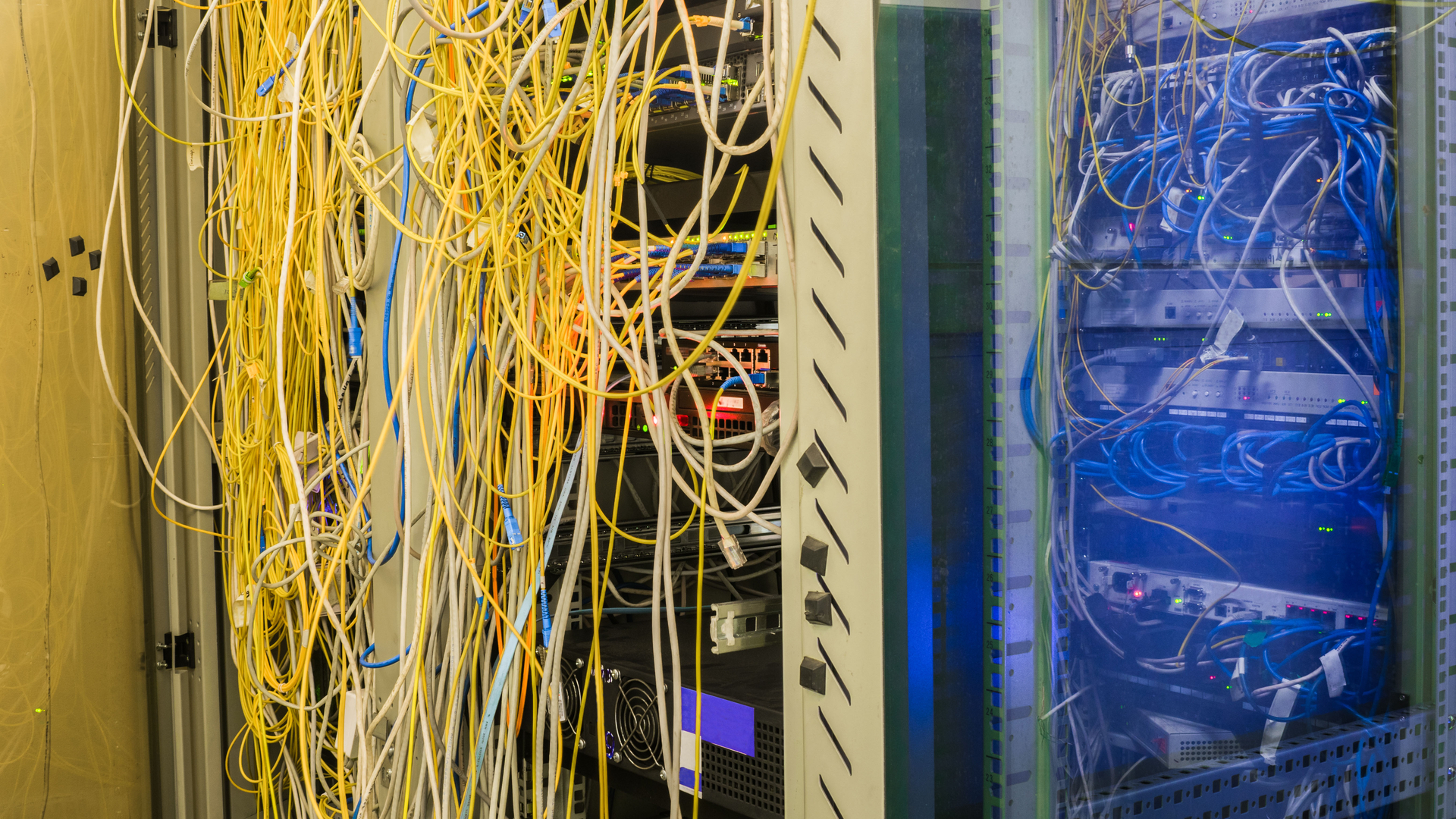What is SD-WAN?
Meet the technology that’s going to take the headache out of wide area network management


After almost a year of near-constant remote working, it isn’t difficult to visualise how important it is to maintain an effective and unobstructed network – especially in the UK, where outages remained high last year despite an overall drop in global outages.
This is especially crucial for businesses that have shifted operations to the cloud and rely on good connectivity in order to facilitate fruitful collaboration. In fact, bottlenecks and outages are some of the most detrimental obstacles to the successful operation of a company, often leading to lowered productivity and even financial losses.
Hence, keeping a business connected while working remotely has been one of the most demanding goals for 2020 and continues to be a target for 2021. With so many potential obstacles, managing the businesses network within a virtualised environment can make life much easier for everyone, and that is where SD-WAN comes in.
The acronym stands for software-defined wide area network and entails the simplification of running WAN using commercially-available Internet access, while also remaining budget-conscious.
SD-WANs make it possible for businesses to put their needs first by simplifying the routing of internet traffic as well as gaining insight into potential bottlenecks and areas which might be affected.
They also manage to meet the needs of businesses in ways that WAN technology previously couldn’t. Traditionally, WAN emphasised the goal of keeping different branches of a business connected to one another, especially when located with significant distance from one another or situated in remote areas. This means that the enterprise headquarters could remain connected to the company data centres without potential external interference or obstruction.
However, business needs have evolved over the years and, after some time, these traditional routing methods were no longer enough.
Get the ITPro daily newsletter
Sign up today and you will receive a free copy of our Future Focus 2025 report - the leading guidance on AI, cybersecurity and other IT challenges as per 700+ senior executives
Increases in customer demands on bandwidth and the number of users who need to access the network have caused problems for WANs, as has new needs from Wi-Fi users such as greater demand for video and guest network access. But these are just some of the many issues the much-hyped SD-WAN products have aimed to address.
Why is SD-WAN needed?
As technology and processes have become more cloud-centric, previous techniques of routing traffic and managing network connections have become unusable. SD-WAN is a more contemporary and future-proofed method of network management and is designed to use a more visual interface from within a cloud instance.
SD-WAN delivers a multitude of benefits that are tailored for cloud-centric enterprise operations. With organisations adopting software as a service (SaaS) and infrastructure as a service (IaaS) more readily, the amount of traffic flowing through the network has increased dramatically and SD-WAN allows organisations to manage it more easily than previous WAN management methods could.
Networking is a notoriously temperamental part of enterprise IT and is often one of the most time-consuming and frustrating elements to troubleshoot. Configuring business wide area network elements to handle a new service or to address a fault usually involves manually issuing commands to each router in the network individually, which can take weeks or even months depending on the size and geographical locations of the network and the complexity of the change.
Previous methods of WAN management involved network administrators having to manually write lines of code to signal where internet traffic should be going which could take a huge amount of time. Moreover, if an error was in just one of the thousands of lines of code, then the administrator would have to arduously comb through each and every one to find it. Having an error in the code could mean vital business processes would be halted, affecting everyone from the staff keeping the company running, to the loyal customers being unable to purchase from or contact it.
With SD-WAN, administrators can apply changes to all routers across the whole network in one fell swoop, simplifying the process massively.
What SD-WAN can do

SD-WAN uses the technologies and principles of cloud computing to make managing WANs far less painful. It achieves this by decoupling the data plane (part of the router that handles the actual data) from the control plane (part of the router which directs the data) and centralising the management and configuration of the WAN itself through a single cloud-based console. This means that bandwidth can be dynamically shared throughout the WAN, and remotely re-allocated rather than having to be reconfigured at the local network level by an on-site engineer. SD-WAN can prioritise bandwidth allocation based on need, elastically scaling a network's bandwidth up and down as needed.
This is the biggest difference between traditional WAN models and SD-WAN: all of the management and configuration of the network can be done remotely from a single management console. This makes provisioning a new branch or office quicker and easier compared to regular WAN. Rather than having to send a network technician down to the site to set up and configure the new office's network in person, the IT team can use their usual management console to set it up according to predefined policies and rules, provisioning and configuring new equipment at the push of a button.
RELATED RESOURCE

Key considerations for implementing secure telework at scale
Identifying the security risks and advanced requirements of a remote workforce
This is a huge timesaver for branch staff as well as sysadmins, as it means that all they need to do when they have a piece of networking equipment that needs replacing is take it out of the box and plug it in. Instead of having to wait for a technician to come and get it set up, it can be onboarded almost instantaneously. This means quicker time-to-value from new IT hardware and less hassle for your staff as they're left to do their jobs without worrying about setting up networking infrastructure.
Business agility also benefits from SD-WAN, particularly when it comes to expansion. Getting the network up and running no longer has to be a bottleneck when opening a new location - just ship the equipment to the new building, and the aforementioned remote provisioning will ensure that it's set up quickly and painlessly. It aids digital transformation in a similar fashion, allowing businesses to quickly adopt mobile devices, cloud collaboration tools and other transformative technologies without having to put hundreds of hours into making sure the network can support them.
SD-WAN can also help reduce your operational costs in a number of areas. Removing the need for an on-site technician when altering or troubleshooting a network takes travel time and costs out of the equation, making your network engineers more efficient. By the same token, using pre-set templates and profiles means a small, centralised team of network administrators can take care of network operations for a wide geographic area, reducing the need for local technicians.
CIOs can save money on the connections themselves, too; SD-WAN allows them to reduce their reliance on expensive MPLS connections by bundling together bandwidth from standard commercial broadband packages, 4G connections and even satellite links. In addition, the software-defined nature of the technology means that it can be run using commodity hardware, rather than expensive proprietary equipment.
In addition to this, SD-WAN brings huge benefits to the reliability and quality of your connections. Because these networks are centrally controlled, the software can utilise automatic routing and handling rules to ensure that latency-sensitive applications like videoconferencing or VoIP tools always have as much bandwidth as they need to deliver smooth service. What's more, the ability of SD-WAN to group multiple connection types together means businesses can automatically failover to a secondary line if their main connection fails.

Connor Jones has been at the forefront of global cyber security news coverage for the past few years, breaking developments on major stories such as LockBit’s ransomware attack on Royal Mail International, and many others. He has also made sporadic appearances on the ITPro Podcast discussing topics from home desk setups all the way to hacking systems using prosthetic limbs. He has a master’s degree in Magazine Journalism from the University of Sheffield, and has previously written for the likes of Red Bull Esports and UNILAD tech during his career that started in 2015.
-
 Bigger salaries, more burnout: Is the CISO role in crisis?
Bigger salaries, more burnout: Is the CISO role in crisis?In-depth CISOs are more stressed than ever before – but why is this and what can be done?
By Kate O'Flaherty Published
-
 Cheap cyber crime kits can be bought on the dark web for less than $25
Cheap cyber crime kits can be bought on the dark web for less than $25News Research from NordVPN shows phishing kits are now widely available on the dark web and via messaging apps like Telegram, and are often selling for less than $25.
By Emma Woollacott Published
-
 Cisco claims new smart switches provide next-level perimeter defense
Cisco claims new smart switches provide next-level perimeter defenseNews Cisco’s ‘security everywhere’ mantra has just taken on new meaning with the launch of a series of smart network switches.
By Solomon Klappholz Published
-
 Cisco is jailbreaking AI models so you don’t have to worry about it
Cisco is jailbreaking AI models so you don’t have to worry about itNews Cisco's new AI Defense security solution helps organizations shore up LLM security by identifying potential flaws.
By Solomon Klappholz Published
-
 Cisco dispels Kraken data breach claims, insists stolen data came from old attack
Cisco dispels Kraken data breach claims, insists stolen data came from old attackNews Cisco has refuted claims it has suffered a data breach after the Kraken threat group posted stolen data online.
By Solomon Klappholz Published
-
 Cisco patches critical flaws in Identity Services Engine
Cisco patches critical flaws in Identity Services EngineNews Cisco has issued patches for a pair of critical vulnerabilities affecting its Identity Service Engine (ISE).
By Nicole Kobie Published
-
 Your office is now absolutely riddled with surveillance equipment
Your office is now absolutely riddled with surveillance equipmentNews While workplace monitoring is shown to have a detrimental effect on morale, many firms are still charging ahead
By Nicole Kobie Published
-
 Cisco confirms attackers stole data, shuts down access to compromised DevHub environment
Cisco confirms attackers stole data, shuts down access to compromised DevHub environmentNews The tech giant insists that no sensitive customer information has been compromised
By Solomon Klappholz Published
-
 Cisco confirms investigation amid data breach claims
Cisco confirms investigation amid data breach claimsNews The networking giant says its probe is ongoing amid claims a threat actors accessed company data
By Nicole Kobie Published
-
 Rubrik partners with Cisco to bolster cyber resilience
Rubrik partners with Cisco to bolster cyber resilienceNews Rubrik now integrates with Cisco XDR and is listed on the connectivity giant’s SolutionsPlus program
By Daniel Todd Published